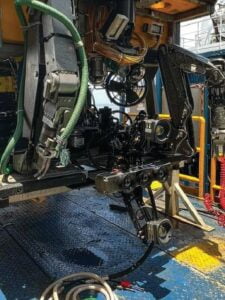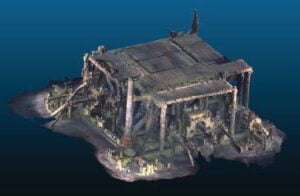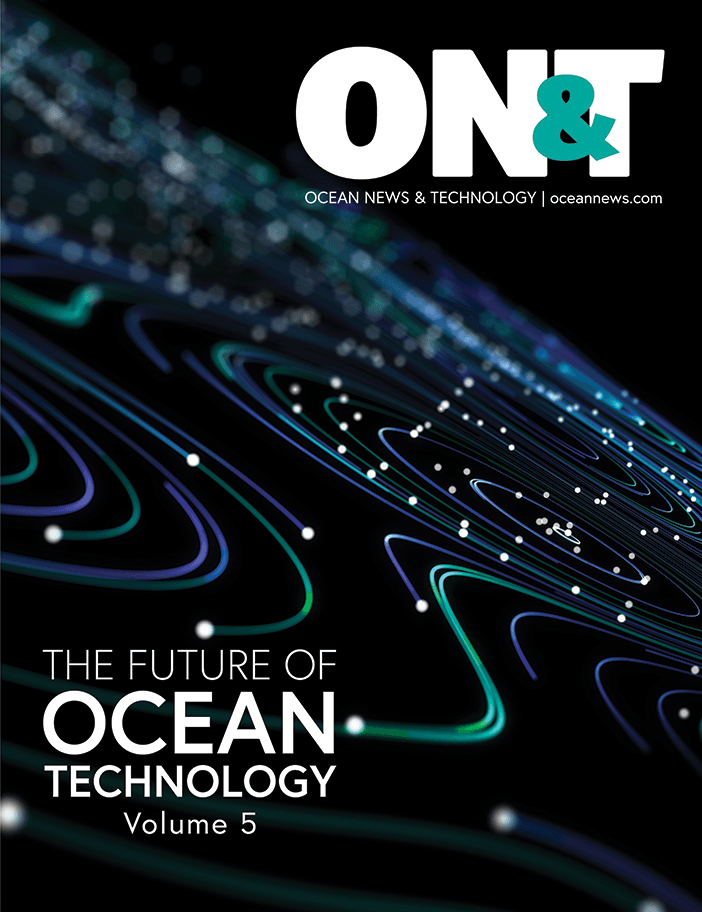A WHOLE MODEL PERSPECTIVE
The 3D Recon system uses a 3D reconstruction method to build these models and offers numerous advantages over traditional video inspection. Utilizing ‘Fast Digital Inspection’ (FDI) techniques, this system provides comprehensive detailed models of structures in less time than a conventional GVI campaign.
Unlike traditional video inspections that rely on individual images gathered at select points throughout a survey, 3D Recon delivers a complete model of the structure, allowing for a big-picture view while also maintaining the details necessary to make decisions on the asset. Subsea engineers can then focus their attention on specific areas of interest, zooming in and navigating around the model to make distance, angular, and volumetric measurements with a known accuracy.

Notably, the data acquisition time to generate a model of an XTree can now be completed in under 20 minutes, while large manifold acquisition takes less than 40 minutes, showcasing the efficiency of 3D Recon to save operational time.
CHANGE DETECTION
By utilizing digital twin technology to compare the baseline 3D model and subsequent 3D models, we can automate change detection and effectively monitor structural alteration over time. For instance, we can revisit a structure after a certain period and accurately detect degradation such as scouring, anode depletion or corrosion by comparing the historical models. This capability provides a reliable means of tracking any changes in the subsea structures, so operators can more easily evaluate the status of their assets and therefore safely extend the life of their assets based on quantitative data.
ADDITIONAL SENSOR DATA
In addition to its core deliverables, 3D Recon users can integrate and overlay additional data, such as contactless cathodic potential measurements and methane levels, from various sensors into the models to create a comprehensive 3D spatial representation of the structure’s condition. This data can be acquired through a single FDI survey. The combined dataset enriches the 3D model for a deeper analysis of factors contributing to structural integrity, making it a valuable tool for subsea intervention planning.

ENHANCING TRADITIONAL VIDEO
High-resolution, spatially correct models enhance subsea integrity management and serve as a bridge between traditional video inspection methods. The transition is seamless with 3D Recon as it utilizes high frame rate images to construct its deliverables while achieving a 40% reduction in FDI survey time compared to traditional GVI surveys. By delivering images and video in addition to the processed 3D model, this system preserves the still image/video-based format, core to traditional GVI surveys. The integrity engineers may now use the comprehensive 3D models to make decisions based on quantitative measurements, not qualitative estimates as historically made from video.
As part of the transition towards incorporating 3D reconstruction technology into subsea inspection, Zupt acknowledges the existing landscape of inspection software such as Integrity Elements and NEXUS IC. To facilitate a smooth integration process, 3D Recon provides still images and videos compatible with incumbent inspection software for operators and engineering/inspection contractors to adapt their existing workflows gradually.
For more information, visit: www.zupt.com.
This story was originally featured in ON&T Magazine’s September 2023 issue. Click here to read more.

